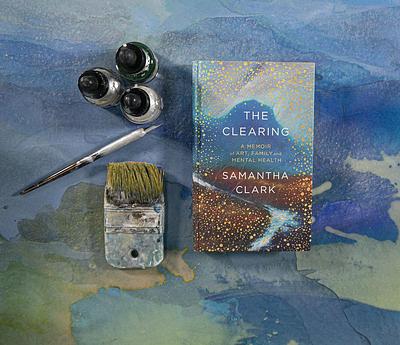Looking for all Articles by Samantha Clark?
Five things to think about when writing memoir
New Writers Awardee Samantha Clark shares insight into writing from your own life.

It's not all about you
Most people think that memoir is writing about yourself. They are wrong. Memoir is not about you. Memoir is about something else, and your own life experiences are the illustration of that something else. Good memoir makes an argument and makes use of scenes from your life to illustrate that argument. As readers, we are propelled through fiction by plot. But it is argument that gives nonfiction the momentum that draws the reader on.
This is also true of memoir. Ideally, you should be able to boil your memoir's argument down to just one sentence. When writing The Clearing my argument was: 'There is always space between and around things, events, memories, relationships and feelings, even difficult ones, and if you can find that space and pay attention to it you will find peace and clarity there.'
Memoir is not the same as autobiography
If you're really famous you can write an autobiography about everything from your childhood playmates to what you had for breakfast this morning and people will read it because you're their favourite footballer/movie star/politician and they are insatiably nosy about you. The rest of us write memoir. Unlike autobiography, memoir is not the story of a life. It is a story drawn from a life. Which is great! It means you can write more than one memoir! The poet Mark Doty wrote one memoir about losing his partner to AIDS (Heaven's Coast), and then he wrote another about the dogs in his life (Dog Years). Both are entirely wonderful.
Memoir time is psychological not chronological
In memoir, time is always complicated. You always have to navigate the 'then' of the event and the 'now' of the writing, and you may even be moving back and forth between many different 'thens'. These multiple vantage points in time offer the writer enormous flexibility and creativity in how to move between them. Time can circle around, stretch out, collapse a decade or fold over itself in multiple layers. It's in the space between these that the magic happens.
Memoir needs an 'arc'
It needs to take the reader somewhere. Something has to shift, change or grow. Because memoir is not about what happened. It's about what you did with what happened and how that changed you. Memoir contemplates the mish-mash of life's events and from them teases out coherence and meaning.
This is what your reader wants from you. Not anecdotes or scenes from your life: meaning.
Write towards the squirmy feelings
Don't indulge them, but don't avoid them. Just watch the squirming and see what's underneath it. Uncomfortable feelings are a signal that you are onto something. We all have dark corners of shame and grief. Work to illuminate these with the clear light of understanding. Offer your friendly, calm attention until you find precisely the right words for what you are observing. Good memoir is vulnerable. Readers will connect with that voice of honesty at an emotional level.
Further Reading:
Vivian Gornick The Situation and the Story: The Art of Personal Narrative, Farrar, Strauss and Giroux
Sven Birkerts The Art of Time in Memoir Graywolf Press
Marion Roach Smith The Memoir Project: A Thoroughly Non-Standardized Text on Writing & Life Grand Central Publishing
Patricia Hempl I Could Tell You Stories: Sojourns in the Art of Memory, W.W. Norton
The Clearing by Samantha Clark, published by Little, Brown, is out in paperback now.
